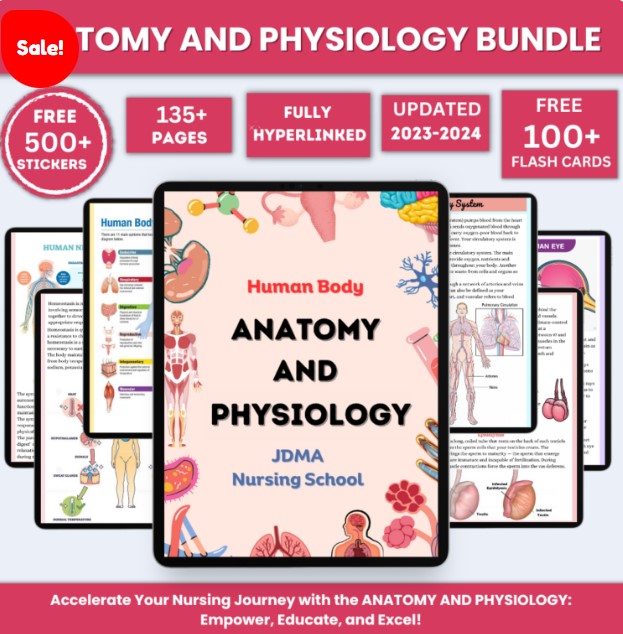Latest Trends in Medical-Surgical Nursing Education and Practice
The field of medical-surgical nursing is rapidly evolving, shaped by advancements in technology, changing patient demographics, and emerging healthcare needs. As one of the foundational specialties in nursing, it plays a critical role in providing care across a broad spectrum of health conditions. This article explores the latest trends in medical-surgical nursing education and practice, highlighting innovations that are reshaping the profession.
Integration of Technology in Education
Technology has become a cornerstone in nursing education, providing tools that enhance learning and skill development. Some of the most significant trends include:
- Simulation-Based Learning High-fidelity simulations using mannequins and virtual reality (VR) systems allow nursing students to practice complex procedures in a safe, controlled environment. These simulations mimic real-life scenarios, such as managing a patient with sepsis or post-operative complications, helping students develop critical thinking and clinical decision-making skills.
- E-Learning Platforms Online learning platforms, such as Moodle and Blackboard, offer flexibility for students to access lectures, assignments, and interactive modules. These platforms often include multimedia resources like videos, case studies, and quizzes, making education more engaging and accessible.
- Artificial Intelligence (AI) AI-driven tools are being integrated into nursing curricula to personalize learning experiences. For instance, adaptive learning platforms analyze student performance and tailor content to address individual weaknesses, ensuring mastery of critical concepts.
Emphasis on Interprofessional Education (IPE)
Interprofessional education has gained prominence in preparing nursing students for collaborative practice. IPE involves learning alongside students from other healthcare disciplines, such as medicine, pharmacy, and physical therapy. This approach fosters teamwork, communication, and a deeper understanding of each profession’s role in patient care.
- Team-Based Learning (TBL) TBL sessions simulate real-world healthcare environments where students work together to solve clinical problems. For example, a team might develop a care plan for a post-surgical patient with diabetes, incorporating insights from various disciplines.
- Shared Clinical Rotations Collaborative clinical experiences allow nursing students to engage with other healthcare professionals in hospital settings, enhancing their ability to function effectively in multidisciplinary teams.
Focus on Patient-Centered Care
The shift toward patient-centered care has led to a redefinition of nursing roles in medical-surgical settings. This approach prioritizes the preferences, values, and needs of patients, ensuring that they play an active role in their care.
- Cultural Competency Training As patient populations become more diverse, cultural competency has become a critical component of nursing education. Nurses are trained to provide care that respects cultural differences, including dietary preferences, communication styles, and health beliefs.
- Shared Decision-Making Nurses are increasingly involved in shared decision-making processes, helping patients understand their treatment options and outcomes. This empowers patients to make informed choices that align with their values and goals.
Advancements in Clinical Practice
The practice of medical-surgical nursing is evolving in response to technological innovations and changing healthcare landscapes. Here are some key trends:
- Telehealth Integration Telehealth has become a staple in healthcare delivery, enabling nurses to provide care remotely. Medical-surgical nurses use telehealth platforms to monitor post-operative patients, manage chronic conditions, and conduct follow-up assessments, improving access to care while reducing hospital readmissions.
- Point-of-Care Technology Portable diagnostic tools, such as handheld ultrasound devices and glucose monitors, are becoming commonplace in medical-surgical units. These tools allow nurses to perform real-time assessments, leading to faster interventions and improved patient outcomes.
- Data-Driven Decision-Making Nurses are leveraging electronic health records (EHRs) and data analytics to enhance patient care. By analyzing trends in patient data, such as vital signs or lab results, nurses can identify potential complications early and implement preventive measures.
Expanding Roles of Medical-Surgical Nurses
The role of medical-surgical nurses is expanding beyond traditional bedside care to include leadership, education, and advocacy. This shift reflects the growing complexity of healthcare systems and the need for versatile professionals.
- Clinical Nurse Leaders (CNLs) CNLs are advanced generalists who oversee patient care and improve outcomes by coordinating interdisciplinary teams, implementing evidence-based practices, and mentoring staff nurses.
- Nurse Educators Experienced medical-surgical nurses are taking on teaching roles to address the shortage of nursing faculty. They contribute to curriculum development, clinical instruction, and student mentorship, ensuring the next generation of nurses is well-prepared.
- Advocacy and Policy-Making Nurses are increasingly involved in advocating for healthcare policies that benefit patients and the profession. For example, they may lobby for staffing ratio legislation or participate in initiatives to reduce healthcare disparities.
Evidence-Based Practice (EBP)
Evidence-based practice remains a cornerstone of medical-surgical nursing, ensuring that care is grounded in the latest research and best practices. Recent trends in EBP include:
- Rapid Implementation of Research Findings The COVID-19 pandemic underscored the importance of quickly translating research into practice. Medical-surgical nurses played a key role in adopting new protocols, such as infection control measures and treatment guidelines.
- Quality Improvement Initiatives Nurses are leading quality improvement projects to enhance patient safety and care efficiency. For example, initiatives to prevent pressure ulcers or reduce catheter-associated infections often involve frontline nursing staff.
- Lifelong Learning Continuing education is essential for staying updated on EBP. Many nurses pursue certifications, attend workshops, and participate in journal clubs to keep their knowledge current.
Addressing Burnout and Workforce Challenges
The nursing profession faces ongoing challenges related to burnout and workforce shortages. Addressing these issues is critical to sustaining high-quality care in medical-surgical settings.
- Resilience Training Programs focused on building resilience and emotional well-being are helping nurses cope with the demands of their roles. Techniques such as mindfulness, stress management, and peer support are becoming integral to nursing education and practice.
- Flexible Work Arrangements To improve work-life balance, healthcare organizations are offering flexible schedules, telehealth opportunities, and part-time roles, making the profession more appealing.
- Recruitment and Retention Strategies Efforts to attract and retain nurses include tuition reimbursement programs, competitive salaries, and opportunities for career advancement.
The Future of Medical-Surgical Nursing
The future of medical-surgical nursing will be shaped by ongoing advancements in technology, an emphasis on holistic care, and the evolving needs of patients and healthcare systems. Key areas of focus include:
- Integration of Artificial Intelligence (AI) AI has the potential to revolutionize nursing by assisting with tasks such as patient monitoring, predictive analytics, and workflow optimization. For example, AI algorithms can identify patients at risk of deterioration, allowing nurses to intervene proactively.
- Personalized Medicine Advances in genomics and precision medicine are enabling more tailored approaches to patient care. Medical-surgical nurses will need to understand genetic testing and its implications for treatment plans.
- Sustainability in Healthcare As environmental concerns grow, nurses are advocating for sustainable practices in healthcare settings, such as reducing waste and conserving resources.
Conclusion
The field of medical-surgical nursing is undergoing significant transformation, driven by technological advancements, changing healthcare demands, and a commitment to patient-centered care. By embracing these trends, nursing professionals can enhance their skills, improve patient outcomes, and contribute to the evolution of the healthcare system. As the backbone of acute care, medical-surgical nurses will continue to play a pivotal role in meeting the challenges and opportunities of modern healthcare.














Post Comment